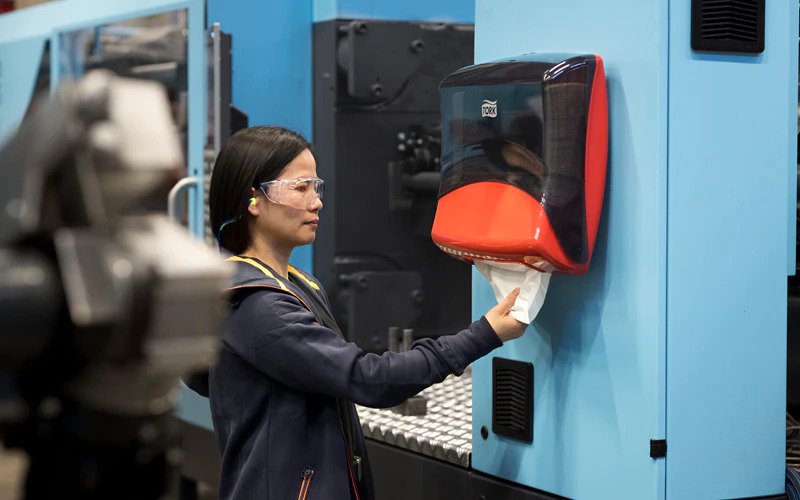Unplanned production downtime on factory floors is a common and costly problem for many businesses. It is estimated that the world’s large industrial facilities lose hundreds of millions of dollars each year to machine failures, as well as 323 production hours per year1.
While big factories are subject to larger financial costs, downtime can be even more challenging for smaller manufacturing firms with limited capital.
It might not be possible to completely curtail unplanned outages, but you can certainly limit downtime in your factory as much as possible by implementing autonomous cleaning and preventative maintenance.
Read on to discover how such small, continuous improvements can help you avert interruptions, quickly identify faults and even prevent accidents – thereby increasing productivity on your factory floor.
1. Why preventative maintenance = better productivity

Preventive maintenance in manufacturing means performing regularly scheduled maintenance activities to prevent failures in the future. Implementing a successful preventative maintenance strategy requires you to plan and schedule activities, as well as keep records of past inspections to curb any problems before they occur.
Put simply, preventative maintenance is about maintaining things before they break. Making continuous improvements is one of the most overlooked factors in conquering downtime due to machine failures. Examples of preventative maintenance including the regular cleaning of equipment to minimize dust and dirt, lubrication of rotating parts to prevent wear and tear, and checking energy efficiency to optimize the power of your machines.
2. How to implement a successful continuous improvement strategy
A successful maintenance strategy requires planning and scheduling maintenance of equipment before a problem occurs. Routine cleaning of your entire production line as a regular procedure is vital to overall efficiency on the factory floor. Research shows that 89% of machine operators believe it is easier to inspect and detect faults on a clean device2, so it makes sense to clean machines as a regular part of operations to prevent costly breaks in your workflow.
3. Why the right cleaning equipment matters

One of the most effective actions you can take to enhance productivity is to provide your staff with the right cleaning equipment, in the right places. It is crucial to provide employees with the tools they require for high-quality job performance. Investing in the right tools for the job is likely to make any cleaning your staff undertake much more effective. In fact, 87% of machine operators agreed that preventive maintenance reduces breakdowns of machines and lost production time3. For example, no matter what task you have at hand at your factory, specially designed cleaning wipes and industrial cloths from Tork can help you get even the harder jobs done more quickly and efficiently.
Having cleaning tools close by gives machine operators the means to undertake autonomous cleaning. This makes it more likely to be done regularly. It’s also more efficient for improving productivity than going off to find supplies.
Tork offers solutions and services that makes industrial cleaning both easy and accessible. Our portable, durable products are specially designed to cope with tough conditions such as factory floors. Choosing the right cleaning products can help you improve your processes and the efficacy of your preventative maintenance regime.
Sources
1 Automation: World’s largest manufacturers lose almost $1 trillion a year to machine failures
2 Tork: Five kaizen tips to improve productivity in manufacturing
3 Oden Technologies: Downtime in manufacturing: what’s the true cost?
